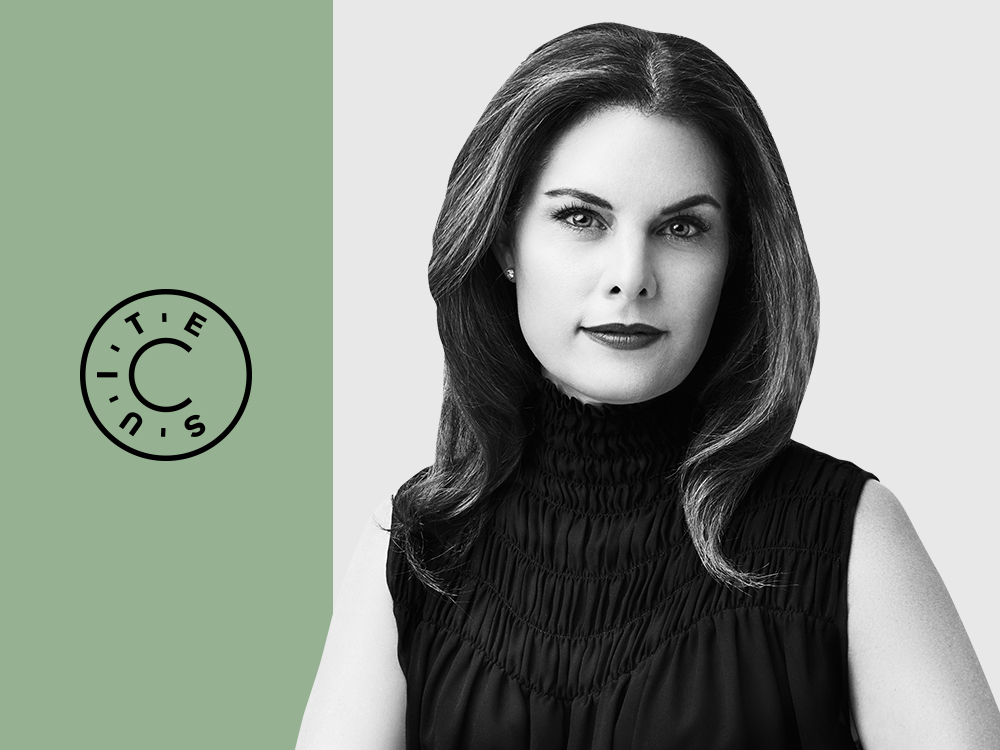
Holly Mason is the President and Executive Creative Director of MasonBaronet, a brand development and advertising firm in the US. She is a sought-after thought leader who worked with Fortune 500 leaders in about every industry.
Read her interview below.
Brandingmag: Sixty percent of millennials in one survey said they expected the same experience across all customer touchpoints when dealing with a company, whether they are in-store or online. In a previous article, we spoke about the importance of aligning across all touchpoints. Please give 2 practical examples of how your firm has helped a brand do so?
Holly Mason: Your brand is the sum of all the experiences someone has with your company. At every touchpoint, a brand has an opportunity to either advance or deteriorate the impression you have of it. It’s visual and experiential. When we’re helping advise a company on their branding, it’s important to look at each touchpoint throughout the sales cycle and beyond to help control the way consumers perceive our clients’ brands. It can be as simple as the impression someone has of your company from the way your business card looks and feels, to the impression they have of you when they go check out your website or social feed, to when they walk in the doors of your office or retail space. It’s how your employees dress, your attitude towards your customers, and the little details in-between. When things look or feel ‘off’ or when your brand is not delivered consistently, consumers don’t trust it and think they can’t rely on it to deliver on your promise, which eventually causes the company’s reputation and business to suffer — if not fail.
“At every touchpoint, a brand has an opportunity to either advance or deteriorate the impression you have of it. It’s visual and experiential.”
Our firm typically starts an engagement with a proprietary brand assessment. It helps us to better understand how our client’s brand is perceived internally and, more importantly, externally. What we learn helps us build a tactical path to get our clients to where they want to go in a way that will resonate with their target audience and be effective. With that lens, we’re able to make sure we’re delivering their brand visually, experientially, and with a consistent message across all touchpoints.
Bm: In a study by Gallup, only 41 percent of employees surveyed said that they knew what their companies stood for and what made their brand different from the rest. Why is it important for brands to understand their value proposition? What are some of the steps they can take to ensure their employees have clarity?
HM: Your brand is not just delivered through your product or service but through your employees and their behaviors. And, when building a brand, actions speak louder than words. Your employees are your brand ambassadors on the front lines with your customers, so they must clearly understand who you are, why you matter, and how you’re unique. They must get it, feel it, believe it, and live it.
Employers can share insights with employees about their company’s value proposition and competitive advantages, but more importantly, make sure they understand why those are relevant to the customers. Share insights about your audience and what they value. When everyone understands the customer’s expectations, they can identify ways in which your business can help deliver on its promise. Are your employees clear on the image you want to project to the world? Challenge employees to think about how that image is expressed when they communicate with a client or respond to a customer request, get dressed for work, or decorate their workspaces. Help employees know where the company is going and how they help contribute to its success. A ‘brand book’ can be a helpful tool for employees to reference. Employees must clearly understand the brand so it will show up in their day-to-day activities.
Bm: Recently, Starbucks hired its first sustainability chief from Levi’s, in an environmental brand pivot. What are your thoughts on sustainability as it relates to brands? How much will the environment play a role in the conversation moving forward?
 HM: I believe there is a rise in companies, business leaders, and consumers being more environmentally and socially conscious people. Younger consumers, in particular, favor sustainable brands — whether it’s a brand taking a stand on a social message, sustainable manufacturing processes or ethical business standards.
HM: I believe there is a rise in companies, business leaders, and consumers being more environmentally and socially conscious people. Younger consumers, in particular, favor sustainable brands — whether it’s a brand taking a stand on a social message, sustainable manufacturing processes or ethical business standards.
We now have access to information, at our fingertips, on a brand and its reputation more than previous generations, to help inform our buying decisions. Employees and consumers want to work for and purchase from brands that treat their employees, partners, and the planet well. And many times, consumers are willing to pay more to support a brand that’s doing good for society and the environment. For all of those reasons, I foresee sustainability and environmental issues becoming even more prominent in a brand’s storyline. Smart companies and their leaders are building brand equity by acting on their conscience.
Bm: Today, a business cannot go anywhere without branding. What are your top 3 tips for developing a robust brand strategy? What are the top 3 biggest pitfalls when brands develop a brand strategy?
HM: To build a strong brand strategy, start by making sure your brand is clearly defined and that you have a consistent message to deliver. The strongest brands take a deep dive into the core of their business and have a thorough understanding of their audience in order to create something meaningful and valuable. Second, keep the attention on your customers. It’s important to listen to your customers, fans, and followers and keep communications focused on their needs. Consumers have gotten smarter and they want to align with brands that understand their wants and needs. They are seeking brands they can trust, brands that grab their attention on an emotional level, and brands that feel personal to them. Last, think in the long-term. It’s not only important to create a brand, but to stay true to your brand — consistency pays off in brand development.
The most common pitfalls I observe clients falling into when it comes to building a brand are:
- Thinking of branding as a campaign and not a long-term strategy and commitment. It’s not about renaming your company or developing a new website. It’s about connecting with your purpose and outwardly sharing that message with your customers, employees, and other constituents.
- Not educating and reinforcing the brand with internal audiences, so they are equipped to deliver on it daily, across all touchpoints.
- Brands not staying true to who they are and what they stand for. It’s okay — your brand is not for everyone. Resist the urge to align with those that don’t share your ideals or value what you deliver. Be clear about who your brand serves to help the right people find you.
- Clients not willing to take risks and to experiment. To get noticed, you need to stand out from the crowd and be bold. Exceptional brands aren’t afraid to push the envelope.
Bm: Trademark question: What’s next? i.e. The next great opportunity & challenge for brands.
HM: Some of the biggest challenges brands will face are that consumer attention spans are getting shorter and shorter and they want what they want, when they want it, and how they want it. This can create a challenge for brands to not only capture and retain their attention but to be able to deliver services and products in a more personalized manner. Branding is becoming more in the eye of the beholder. I believe we’ll see virtual reality and artificial intelligence continue to become more prevailing tools brands use to deliver a more personalized experience, based on the unique needs of the customer.